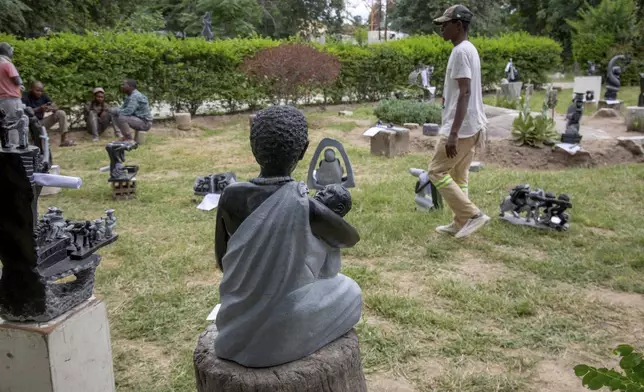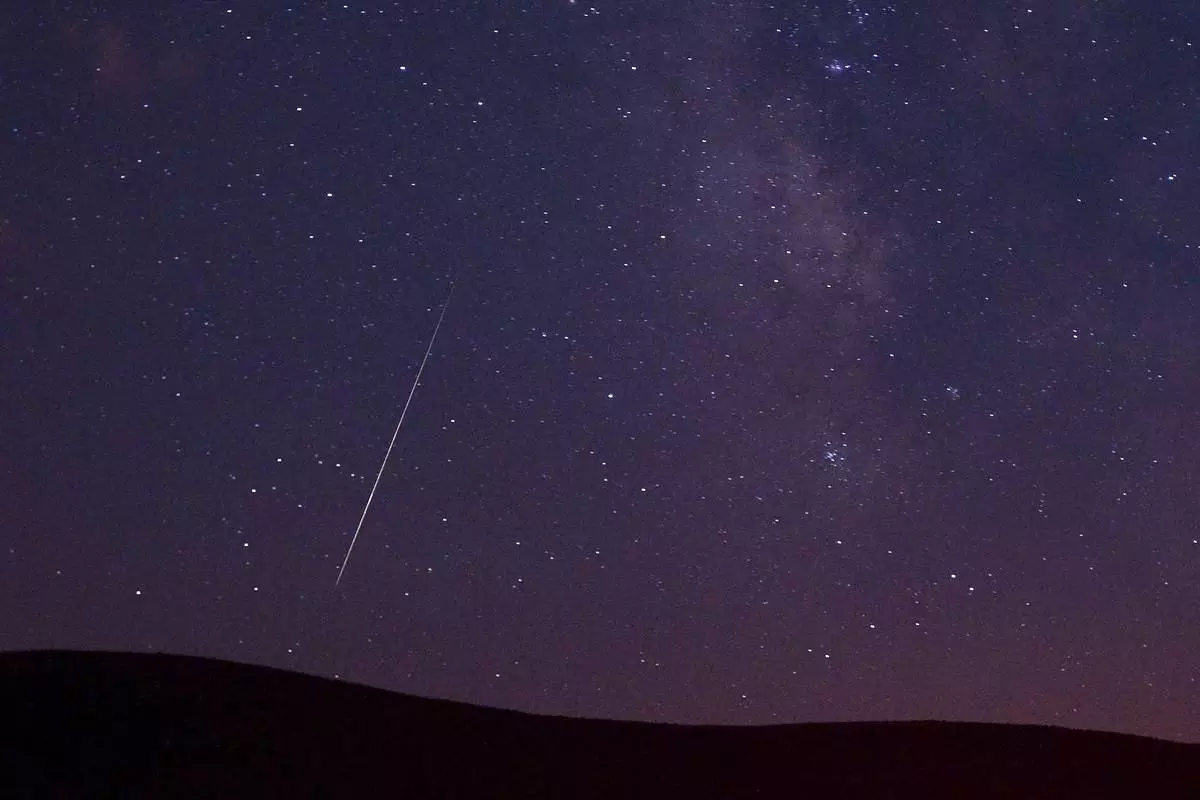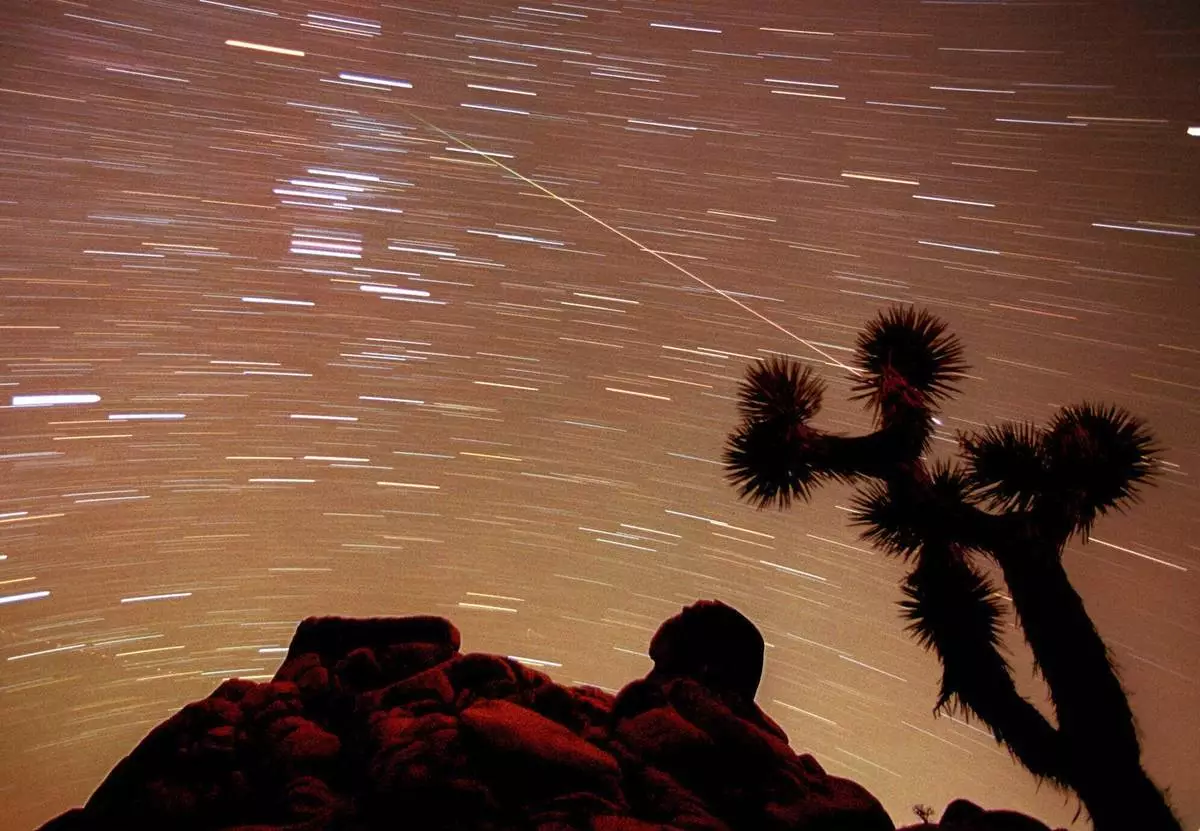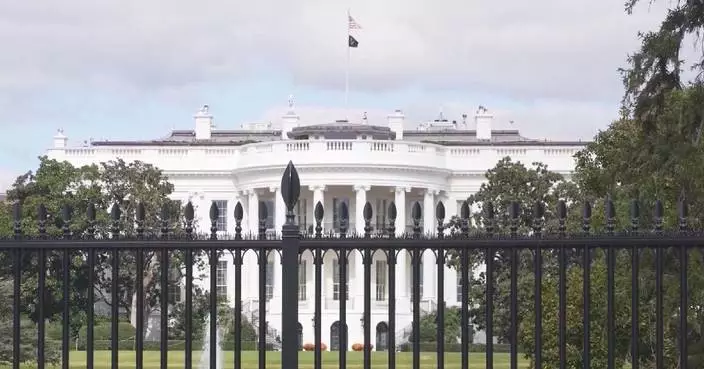CHITUNGWIZA, Zimbabwe (AP) — A pair of white hands blinding a Black face. A smiling colonizer with a Bible, crushing the skull of a screaming native with his boot. Chained men in gold mines, and a pregnant woman.
These stone sculptures from Zimbabwe will take center stage at an upcoming exhibition at Oxford University in Britain, aiming to “contextualize” the legacy of British imperialist Cecil John Rhodes with depictions of religious deception, forced labor and sexual abuse.
Rhodes conquered large parts of southern Africa in the late 19th century. He made a fortune in gold and diamond mining and grabbed land from the local population. His grave lies under a slab of stone atop a hill in Zimbabwe.
Oxford’s Oriel College, where the exhibition will be held in September, is a symbolic setting. A statue of Rhodes stands there despite protests against it since 2015. Rhodes, who died in 1902, was an Oriel student who left 100,000 pounds (now valued at about 10.5 million pounds, or $13.5 million) to the school. His influence endures through a scholarship for students from southern African countries.
For Zimbabwean stone carvers at Chitungwiza Arts Center near the capital, Harare, the exhibition is more than an opportunity for Western audiences to glimpse a dark history. It is also a chance to revive an ancient but struggling art form.
Stone sculpture, once a thriving local industry, has suffered due to vast economic challenges and declining tourism.
“This will boost business. Buyers abroad will now see our work and buy directly from the artists,” said sculptor Wallace Mkanka. His piece, depicting the blinded Black face, was selected as the best of 110 entries and will be one of four winning sculptures on display at Oxford.
Zimbabwe, meaning “House of Stone,” derives its identity from the Great Zimbabwe ruins, a 1,800-acre Iron Age city built with precision-cut stones delicately stacked without mortar. It is a UNESCO World heritage site.
The southern African country has long used stone sculpture as a form of storytelling to immortalize history. The craft survived close to a century of colonial rule that sought to erase local traditions, religion and art forms.
It thrived internationally instead. Thousands of pieces were plundered from Africa. Some later became subjects of repatriation campaigns. Others became prized by tourists and collectors. A permanent collection of 20 Zimbabwean stone sculptures is displayed in a pedestrian tunnel at Hartsfield-Jackson Atlanta International Airport, one of the world’s busiest.
At its peak following independence, Zimbabwe’s stone sculpture industry thrived, with local white farmers purchasing pieces for their homes and facilitating international sales.
“Customers were everywhere. They would pay up front, and I always had a queue of clients,” recalled Tafadzwa Tandi, a 45-year-old sculptor whose work will feature in the Oxford exhibition.
However, the industry has struggled over the past two decades.
Zimbabwe’s global image suffered after controversial land reforms more than two decades ago displaced over 4,000 white farmers to redistribute land to about 300,000 Black families, according to government figures. Late ruler Robert Mugabe defended the reforms as necessary to address colonial-era inequities, but they had unintended economic consequences.
“Many of our customers were friends of the farmers. That is where the problem originated from,” said Tendai Gwaravaza, chairman of Chitungwiza Arts Center.
At the center, the sound of grinders filled the air as sculptors carved. Hundreds of finished pieces, ranging from small carvings to life-sized sculptures, waited for buyers.
“The only solution now is to get out there to the markets ourselves. If we don’t, no one will,” Gwaravaza said.
The Oxford exhibition represents such an opportunity for exposure, he said.
It is the brainchild of the Oxford Zimbabwe Arts Partnership, formed in response to the “Rhodes Must Fall” campaign during the Black Lives Matter protests in the U.S.
The group, consisting of Zimbabwean artists, an Oxford alumnus and a professor of African history, initially envisioned a larger project titled “Oxford and Rhodes: Past, Present, and Future.” It included enclosing Rhodes’ statue in glass, installing 100 life-size bronze statues of African liberation fighters and creating a collaborative sculpture using recycled materials to represent the future.
However, the project required an estimated 200,000 pounds, far beyond available resources. Eventually, Oriel College provided 10,000 pounds for a scaled-down exhibition.
“It’s still my hope that one day it could happen, but for now we have just accepted something very small to make a start and to do something,” said Richard Pantlin, the Oxford alumnus and OZAP co-founder.
For more on Africa and development: https://apnews.com/hub/africa-pulse
The Associated Press receives financial support for global health and development coverage in Africa from the Gates Foundation. The AP is solely responsible for all content. Find AP’s standards for working with philanthropies, a list of supporters and funded coverage areas at AP.org.
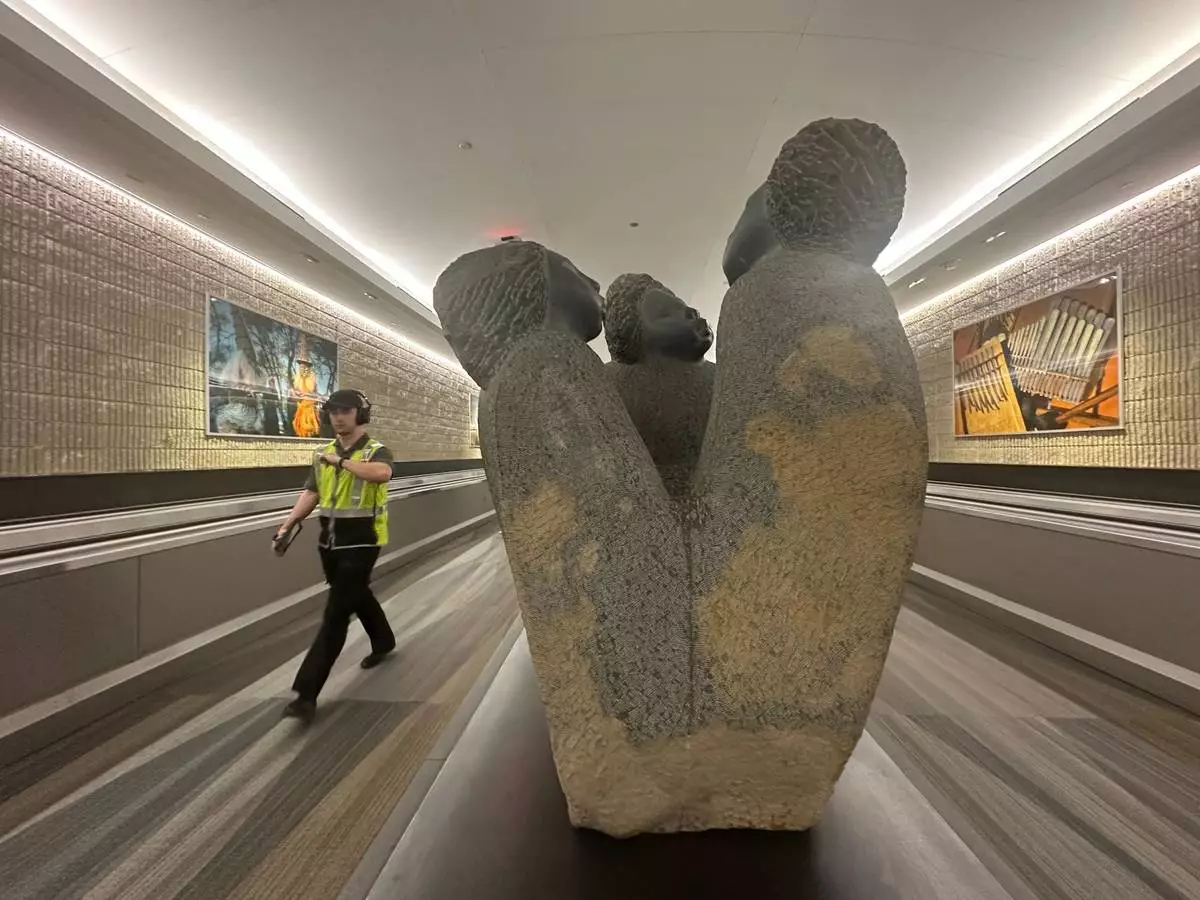
A person walks by a Zimbabwean stone art/sculpture piece at Hartsfield-Jackson Atlanta International Airport, Friday, Feb. 28, 2025, in Atlanta. (AP Photo/Ravi Nessman)
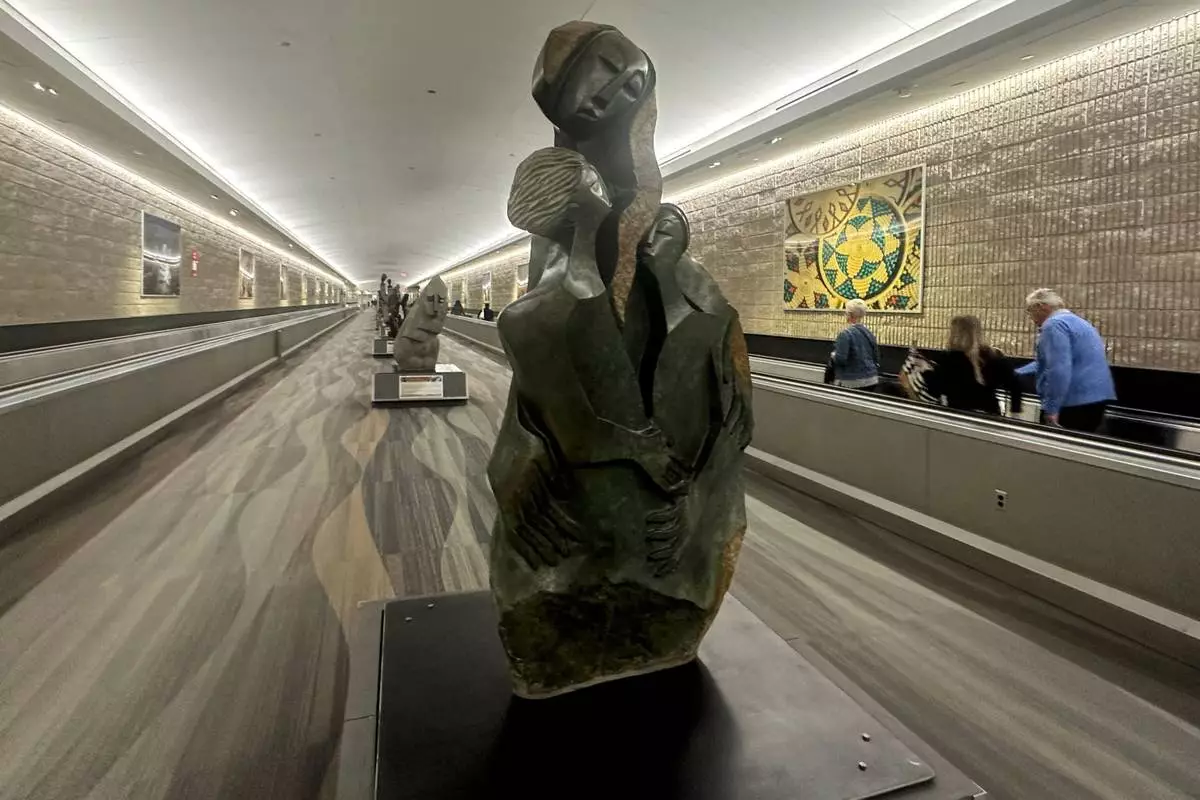
People walk by Zimbabwean sculpture piece at Hartsfield-Jackson Atlanta International Airport, Friday, Feb. 28, 2025, in Atlanta. (AP Photo/Ravi Nessman)
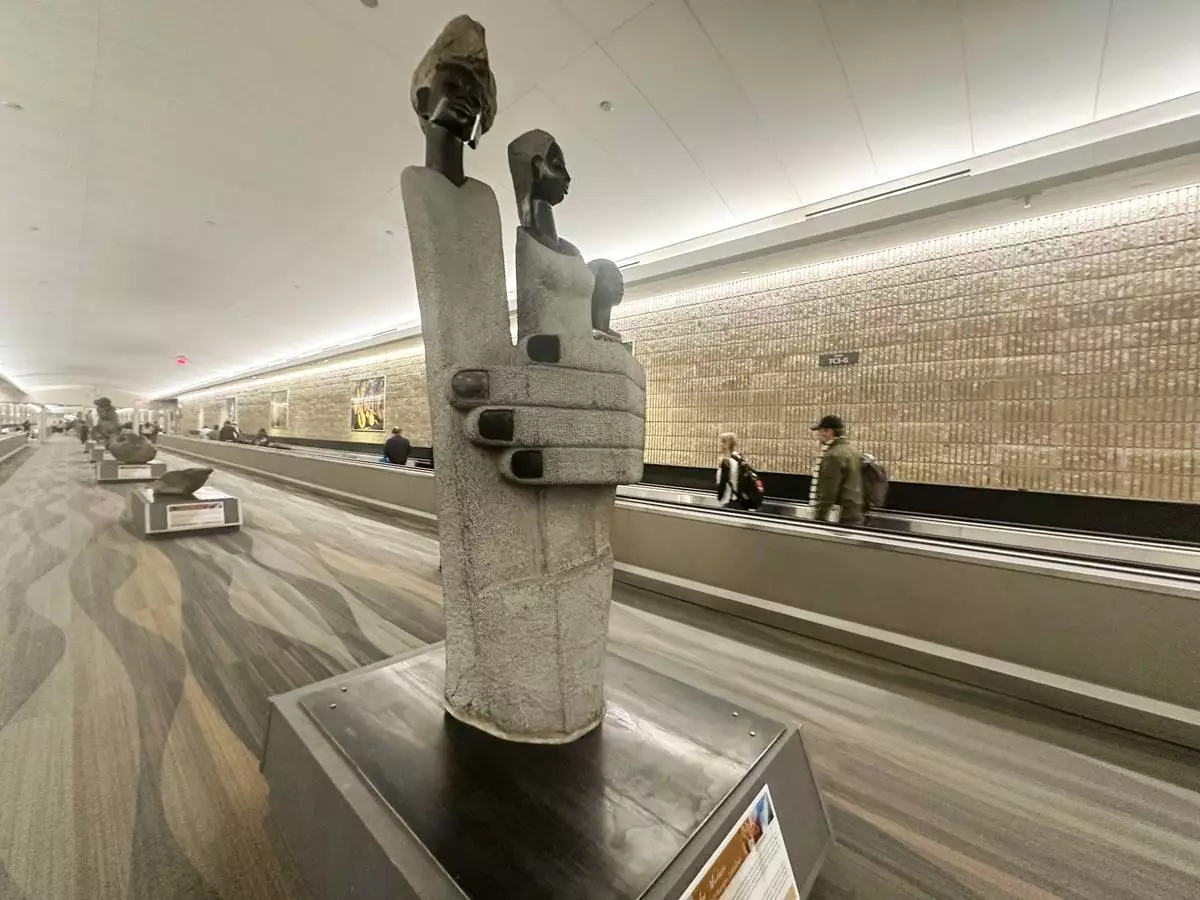
People walk by a Zimbabwean sculpture piece at Hartsfield-Jackson Atlanta International Airport, Friday, Feb. 28, 2025, in Atlanta. (AP Photo/Ravi Nessman)
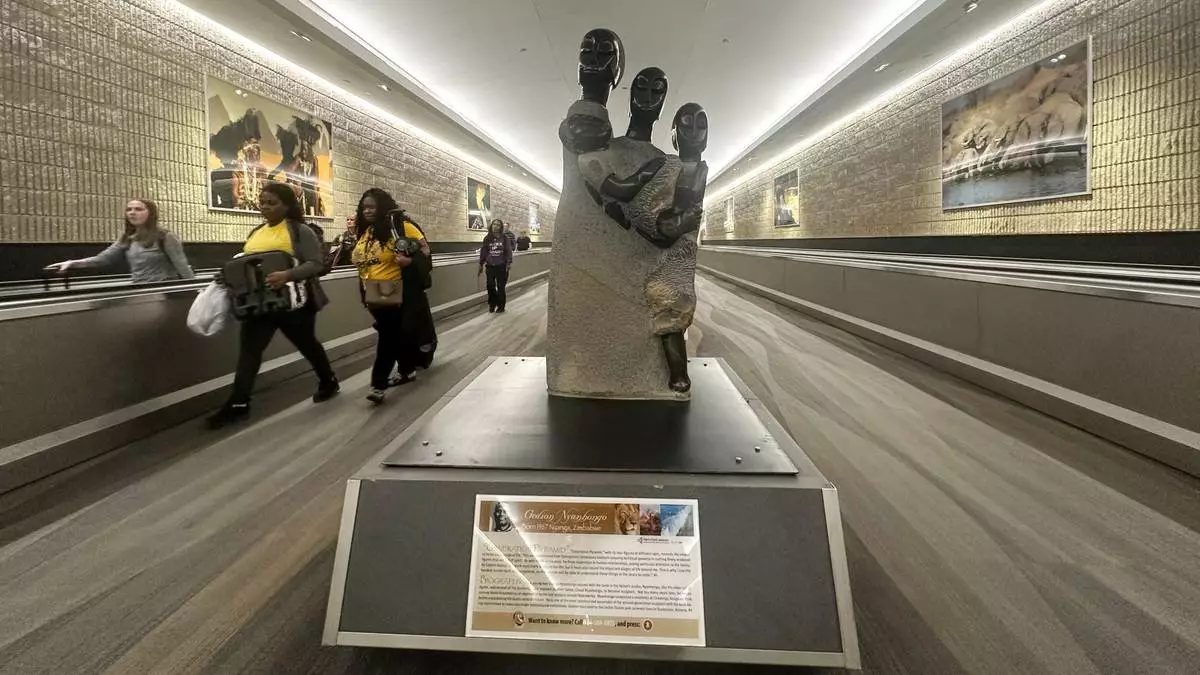
People walk by a Zimbabwean sculpture piece at Hartsfield-Jackson Atlanta International Airport, Friday, Feb. 28, 2025, in Atlanta. (AP Photo/Ravi Nessman)
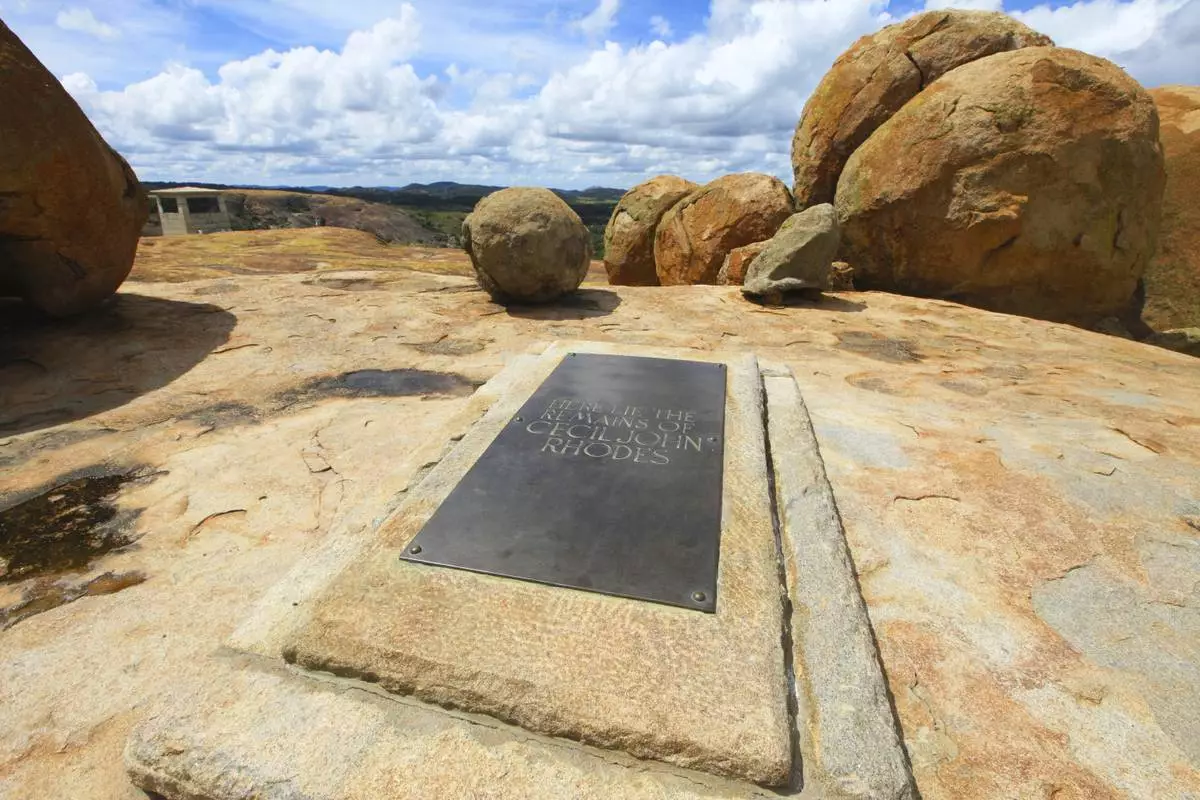
FILE - The burial site of Cecil John Rhodes is seen at Matobo National Park in Zimbabwe, Feb. 26, 2017. (AP Photo/Tsvangirayi Mukwazhi, file)
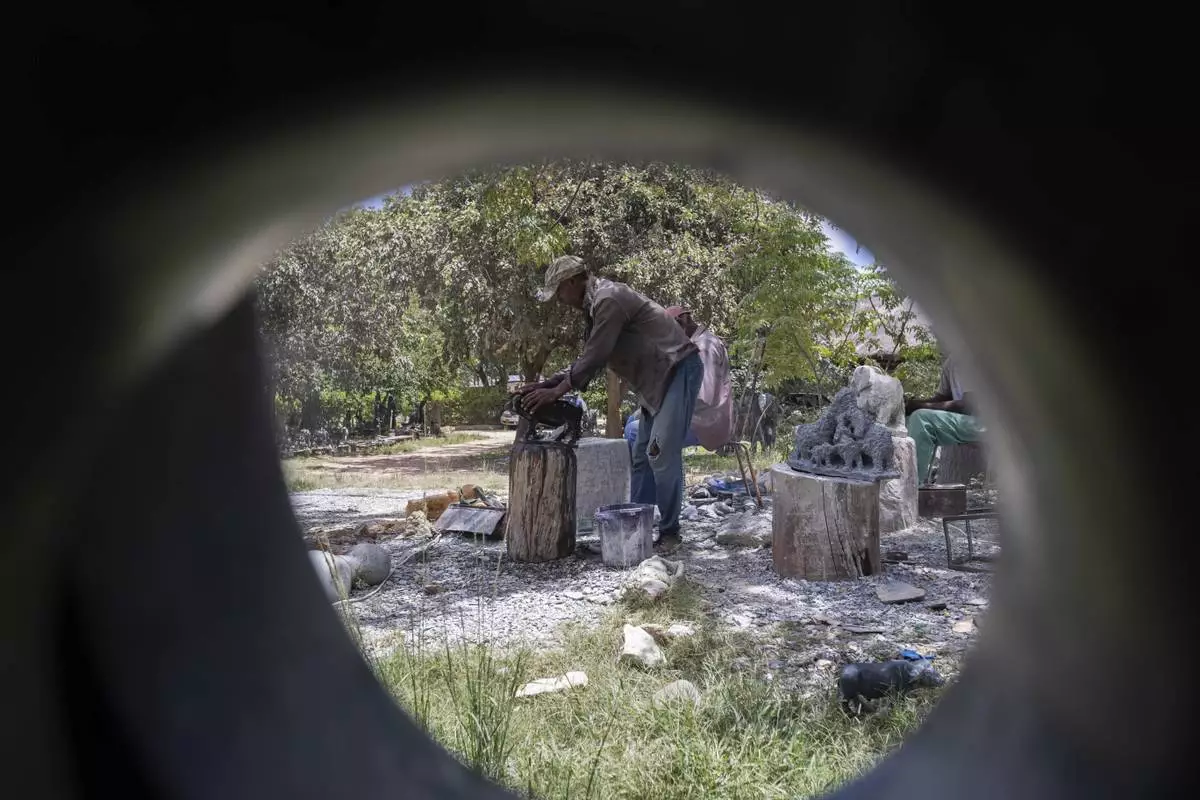
A sculptor works on a piece that will be part of an upcoming exhibition at Oxford University aiming to contextualize the legacy of British imperialist Cecil John Rhodes, at the Chitungwiza Arts Centre near Harare, Zimbabwe, on March 4, 2025. (AP Photo/Aaron Ufumeli)

People walk past sculptures that will be part of an upcoming exhibition at Oxford University aiming to contextualize the legacy of British imperialist Cecil John Rhodes, at the Chitungwiza Arts Centre near Harare, Zimbabwe, Tuesday, March 4, 2025. (AP Photo/Aaron Ufumeli)
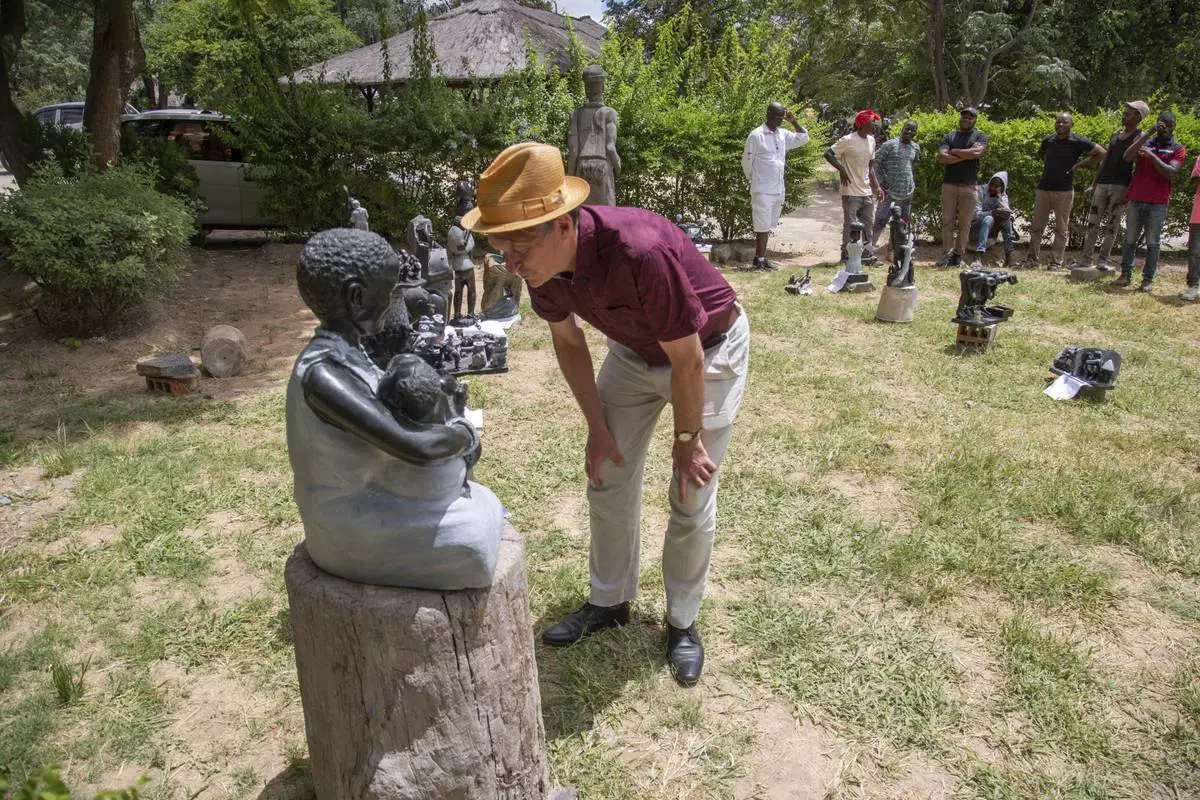
Richard Pantlin, founder of the Oxford Zimbabwe Arts Project, checks a sculpture that will be part of an upcoming exhibition at Oxford University aiming to contextualize the legacy of British imperialist Cecil John Rhodes, at the Chitungwiza Arts Centre near Harare, Zimbabwe, March 4, 2025. (AP Photo/Aaron Ufumeli)
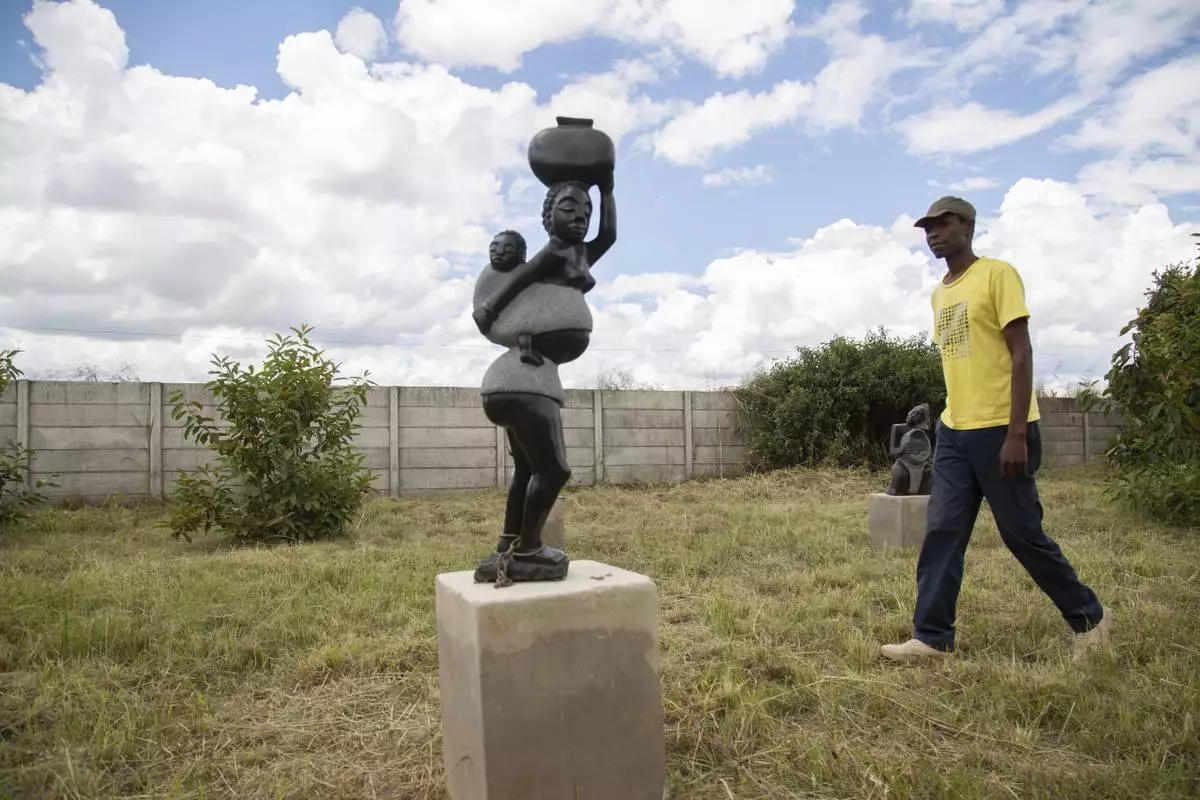
Derrick Fombe walks by his winning sculpture that will be part of an upcoming exhibition at Oxford University aiming to contextualize the legacy of British imperialist Cecil John Rhodes, at the Chitungwiza Arts Centre, near Harare, Zimbabwe, on March 8, 2025. (AP Photo/Aaron Ufumeli)
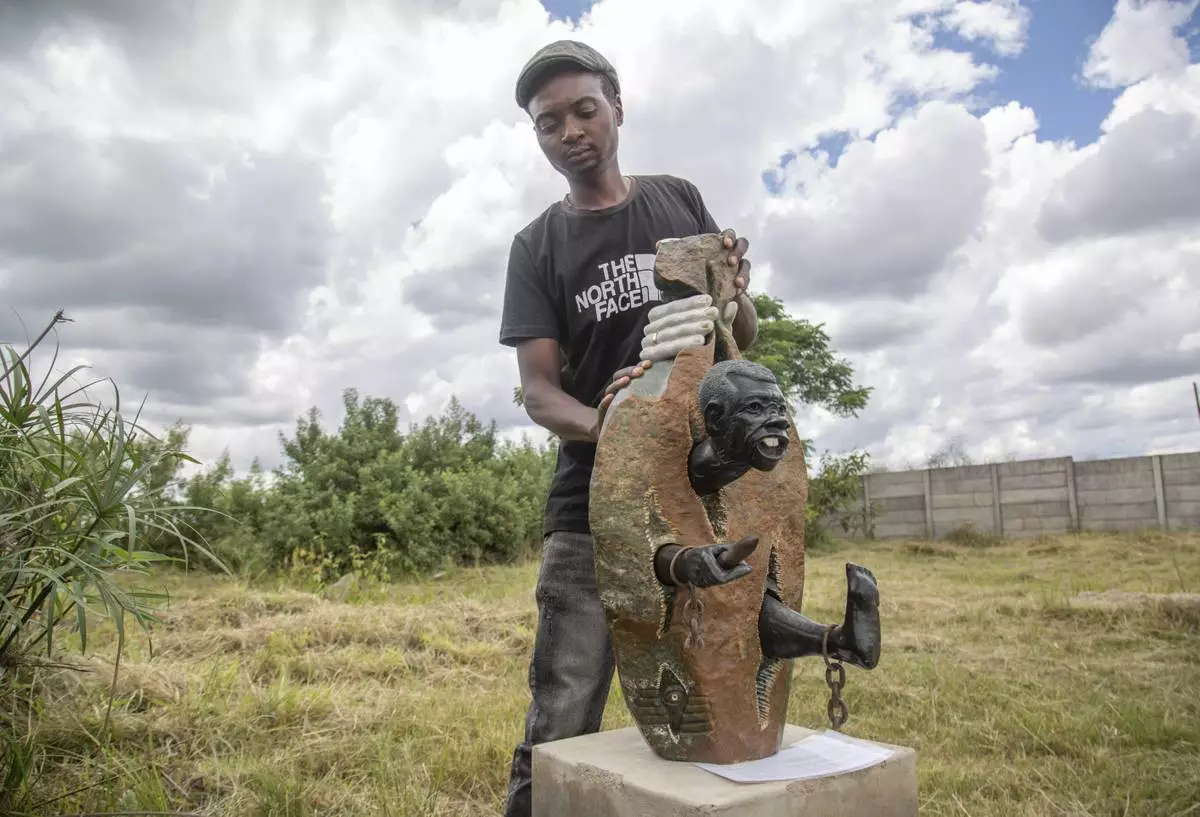
Gift Mutsauni holds his winning sculpture that will be part of an upcoming exhibition at Oxford University aiming to contextualize the legacy of British imperialist Cecil John Rhodes at the Chitungwiza Arts Centre near Harare, Zimbabwe, on March 8, 2025. (AP Photo/Aaron Ufumeli)
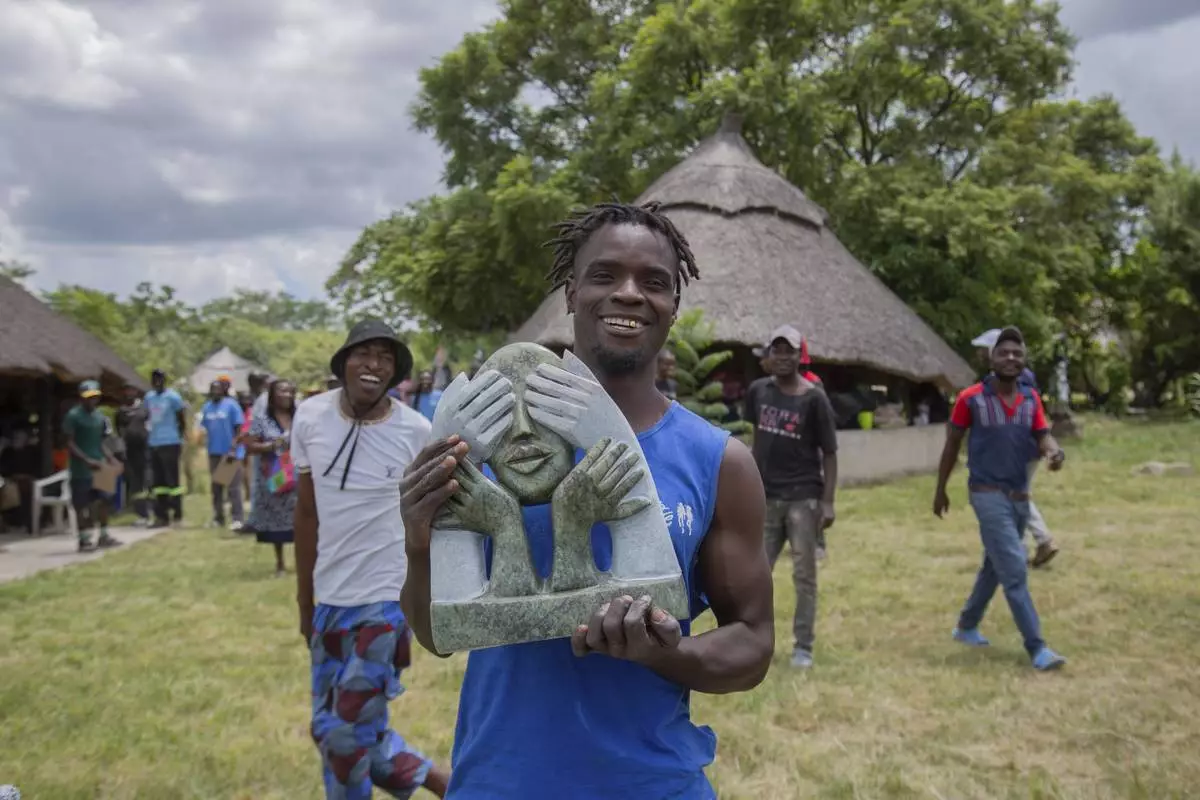
Wallace Mkanka holds his winning sculpture that will be part of an upcoming exhibition at Oxford University aiming to contextualize the legacy of British imperialist Cecil John Rhodes, at the Chitungwiza Arts Centre near Harare, Zimbabwe, on March 8, 2025. (AP Photo/Aaron Ufumeli)









